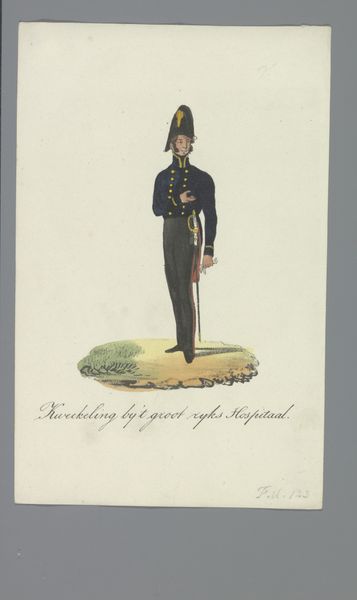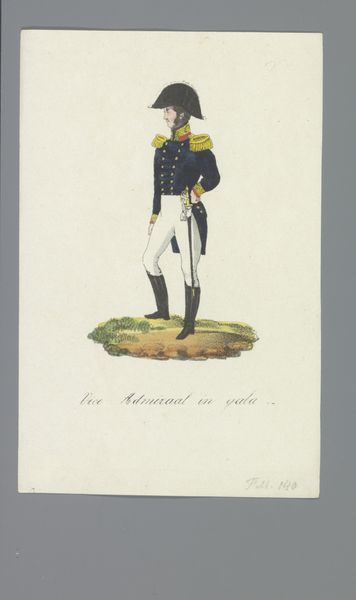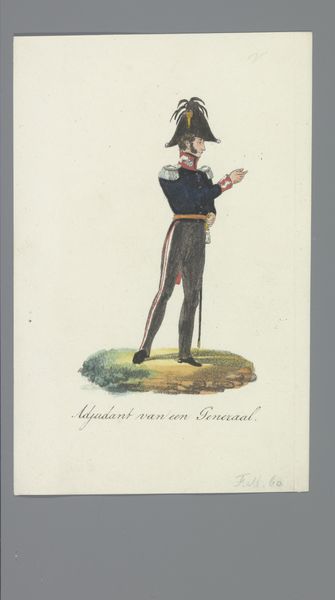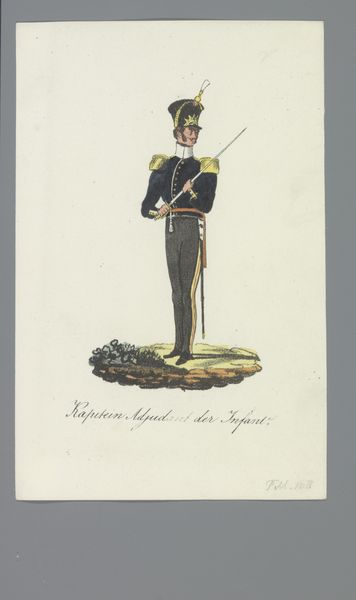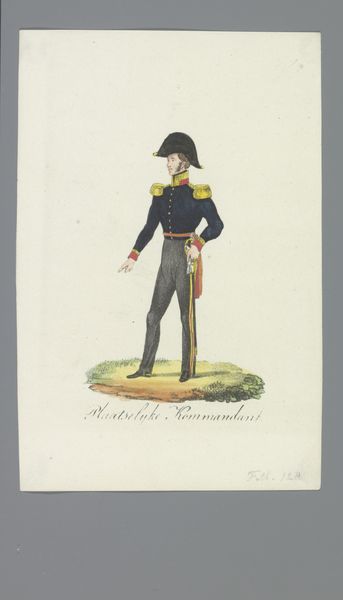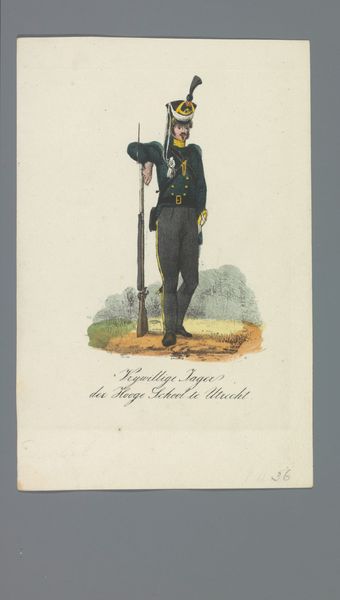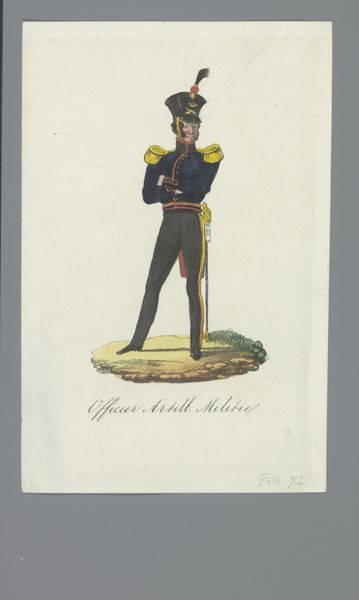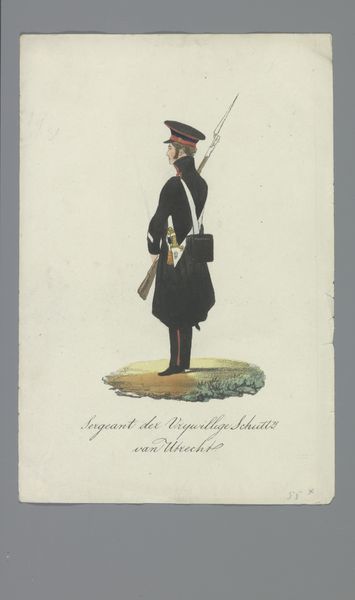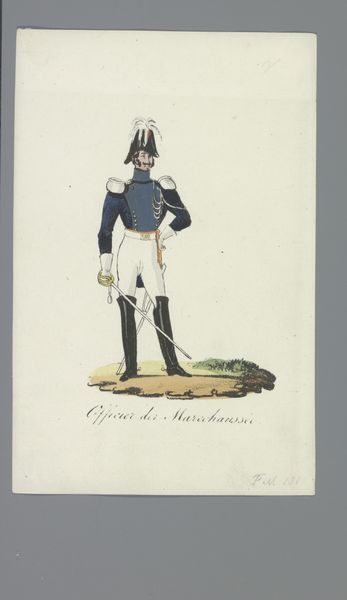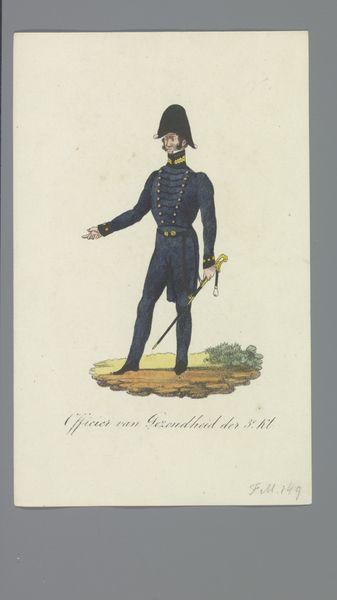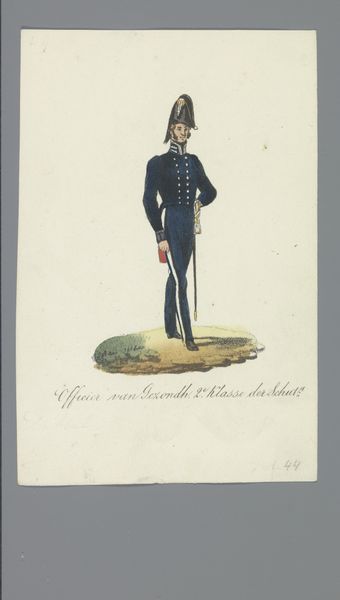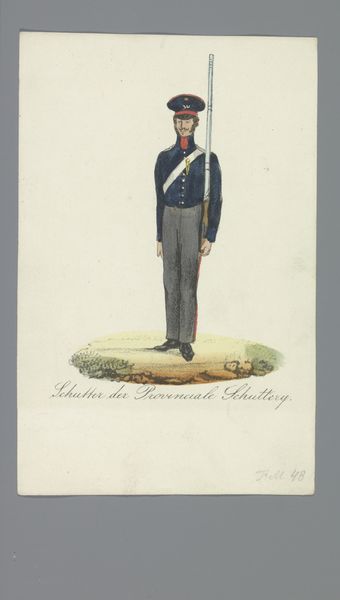
drawing, watercolor
#
portrait
#
drawing
#
watercolor
#
romanticism
#
costume
#
watercolour bleed
#
watercolour illustration
#
genre-painting
Dimensions: height 170 mm, width 110 mm
Copyright: Rijks Museum: Open Domain
Editor: Here we have Albertus Verhoesen's "Gepensioneerd Kolonel," a drawing with watercolor, created sometime between 1835 and 1850. I'm immediately drawn to the precise detail in the uniform. It feels almost like a fashion plate, yet it is intended to be a portrait of a person, or at least a specific type of person. What strikes you about this piece? Curator: The depiction of the retired Colonel immediately positions him within a network of social meanings attached to military service in 19th century Netherlands. Consider how the act of portraying a *retired* colonel—rather than an active one—impacts the visual culture of the military at the time. Does the choice of medium, watercolour and drawing, suggest something about the place of military service and history? What institutions might support such images? Editor: That’s interesting. I hadn’t thought about why a retired colonel specifically was chosen. Could it be connected to some broader shift in attitudes towards military power? Curator: Precisely. Images such as these contributed to the visual construction of Dutch identity, potentially shaping public opinion about military involvement and colonial ambitions. Watercolors at this time allowed for reproduction; could that indicate this portrait’s presence in a public institution such as the army’s own collection or a governmental display? The very existence of such depictions helped craft and disseminate ideals about citizenship, masculinity, and national service. Editor: I hadn't considered the relationship to citizenship. Curator: By focusing on a retired colonel, Verhoesen arguably presents an idealized vision of service and retirement, removed from the messy realities of conflict and governance. But how does the romanticized portrayal potentially downplay or erase more complex realities? Editor: It feels as though studying its context changes what this image communicates. I wouldn’t have noticed all that without your perspective! Curator: Likewise. The intersection of social history and artistic practice is always more nuanced than a simple observation.
Comments
No comments
Be the first to comment and join the conversation on the ultimate creative platform.
